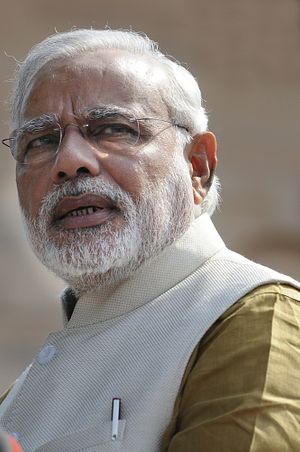It is no secret that Indian Prime Minister Narendra Modi loves Japan. Prime Minister Modi displayed this fact quite openly during his recent trip to Japan. Regardless of whether or not Modi’s trip to Japan leads to meaningful initiatives or shakes up geopolitics in Asia, Modi’s pivot towards Japan represents a change in Indian thinking on issues of modernization and economics.
More than just Japan itself, Modi seems to admire the idea of Japan. This type of thinking introduces a third conceptualization of modernization and economic development into Indian thinking. Previous economic thinking in India either favored a heavily regulated, planned economy modeled after the Soviet Union or was influenced by Anglo-American free market ideas. In reality, neither model prevailed after India’s liberalization in 1991, though in theory the idea was for India to move gradually from a socialist economy to a liberal economy.
However, Modi seems to envision a different model for India’s modernization. While this model also aims to dismantle India’s planned economy, it does not aim for Western-style economic liberalism. In economics as in other matters, Modi seems to be putting India in the same overall camp as its Asian neighbors. According to Sanjeev Sanyal, a global strategist at Deutsche Bank, Modi “is going for a much more East Asian model of heavy spending on infrastructure.” In other words, Modi is aiming for state capitalism, along the lines of Japan and later other East Asian countries. Sanyal added that “Modi thinks of himself as a modernizer, in the vein of Singapore’s Lee Kuan Yew, not a free marketer such as Mrs. [Margaret] Thatcher.”
According to a recent report by Deutsche Bank, The Wide Angle: India 2020 – The Road to East Asia, “a clear and internally coherent economic model is emerging from Prime Minister Modi’s speeches and policy actions. The model includes export-oriented manufacturing, heavy infrastructure building and urbanization. In our view, this suggests a shift from India’s current services-driven growth trajectory to an East Asian growth model based on the mass deployment of labor and capital.”
This is generally a good thing, as India can only expand and modernize its economy by going beyond services. Services by themselves do not generate enough jobs to drive India’s modernization. Ultimately, the only way to raise hundreds of millions of Indians out of poverty and bring them into the modern world is by creating a holistic modern economy through manufacturing. The Deutsche Bank report added that India needs to keep the rupee weak and expand its financial system for this developmental strategy to work. It is perhaps for this reason that Modi’s government recently launched a plan that would let India’s poor create bank accounts.
There are obviously many risks inherent in following this model. However, India has no real alternative. Adopting an East Asian model in India will probably produce faster growth than any other model. Furthermore, many of India’s political and social problems can best be solved by the modernization that economic growth and modern manufacturing will bring. The argument goes that as economic prosperity spreads, old patterns of life will be shaken up and issues of caste, gender, and communal tensions will become less relevant. India has enormous potential for growth and development if it successfully adapts Japan and East Asia’s development strategies and discards the failed economic planning or indifferent approach of past decades.

































